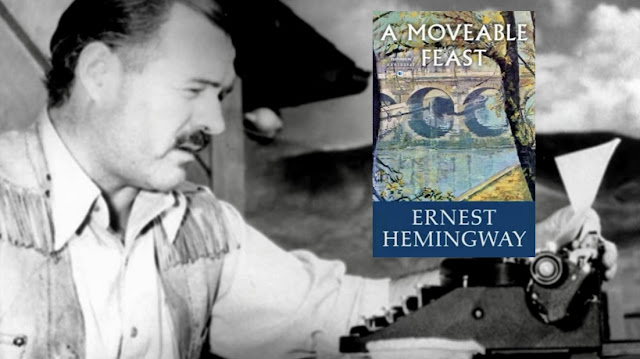“A Moveable Feast” remains one of Ernest Hemingway’s most beloved works, a memoir that vividly captures the idyllic yet tumultuous Paris of the 1920s. Hemingway’s retrospective gaze upon his younger years as a struggling but passionate young writer gives the narrative a poignant and reflective quality. Set against the backdrop of Parisian cafés, the book is populated with luminaries like F. Scott Fitzgerald, Gertrude Stein, and Ezra Pound, offering a window into the lives of the Lost Generation.
Hemingway’s prose is as sharp and concise as ever, with an attention to detail that evokes a powerful sense of place—Paris comes alive in his hands. His narrative weaves between personal struggles, professional growth, and fascinating anecdotes of his interactions with other literary greats, providing insights into his development as a writer and his observations on the human condition.
“A Moveable Feast” is not just a tale of Hemingway himself but also a study of the relationships that profoundly shaped him, including his marriage to Hadley Richardson and his mentorship under Gertrude Stein. These relationships are portrayed with an honesty and intensity that is both enthralling and heartbreaking.
A standout chapter (17) is Hemingway’s intimate glimpse into his relationship with F. Scott Fitzgerald, a vivid portrait of Fitzgerald’s character and his troubled life and a candid depiction of Fitzgerald’s vulnerability, insecurities, and the complexities of his marriage to Zelda Fitzgerald. Hemingway paints Fitzgerald as a talented but deeply flawed individual, a man capable of profound insight yet frequently overwhelmed by the challenges of his private life.
Hemingway also turns the lens on himself, providing a portrayal of his own role as a friend and sometimes reluctant adviser to Fitzgerald, revealing the tension between his respect for Fitzgerald’s literary genius and his frustration with his friend’s self-destructive tendencies. His narrative is both a tribute and a critique, filled with affection yet unflinching honesty.
The book’s title, suggesting the richness that life offers for the taking, encapsulates Hemingway’s enduring love for Paris and his youth—a feast that was not only moveable but also unforgettable. For anyone enamored with Hemingway’s work, or interested in the expatriate experience of Paris in the 20s, this memoir is a must-read, offering a deeply personal look at one of America’s greatest writers.

No comments:
Post a Comment